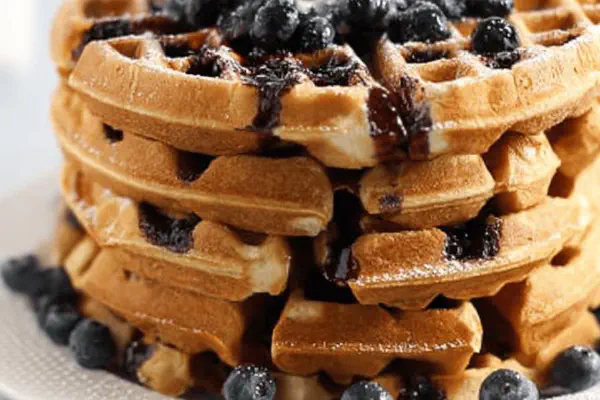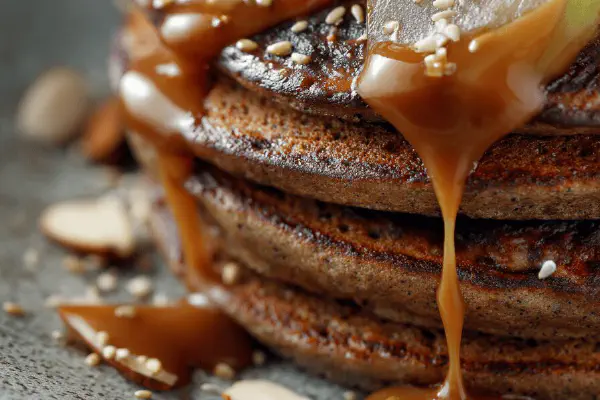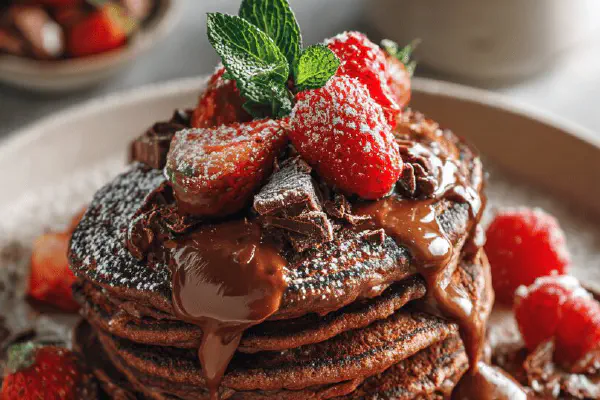Featured Recipe
Double Chocolate Waffles Revamped

By Kate
"
Chocolate waffles reworked with altered quantities and ingredient swaps; buttermilk replaced by plain yogurt for tang, dark cocoa powder swapped for natural cocoa powder. Brown sugar lowered, eggs remain but oil shifted to melted butter for texture and flavor. Flaked sea salt added atop for contrast. Batter rests briefly to hydrate flour and develop flavor. Cook until deep aroma rises, edges firm and slightly crisp. Yield about 12 waffles. Practical tips for batter handling, waffle iron preheating, and fixing common issues.
"
Prep:
25 min
Cook:
20 min
Total:
45 min
Serves:
12 waffles
waffles
chocolate
brunch
dessert
Introduction
Double chocolate waffles—deep, rich, slightly bitter nuances hit immediate senses. Swap buttermilk with plain yogurt; similar tang, thicker texture, more accessible. Cocoa powder change: natural replaces Dutch-processed for sharper chocolate bite and more acidic profile. Brown sugar lowered—prevents overly moist crumb; butter provides better mouthfeel and roasting flavors than neutral oil. Whisk eggs thoroughly to trap air, crucial for lifting density typical in chocolate-forward waffle batters. Batter rests to hydrate flour and balance flavors. Cooking cues: visual dryness at edges, steady steam reduction, firm waffle centers that spring back. Salty flakes on top add surprise texture, lift flavors, stop sweetness sink. Warnings on overmixing, overheating, and handling chocolate chunks share kitchen-tested fixes.
Ingredients
About the ingredients
Reducing flour quantity slightly offsets cocoa’s drying effect; natural cocoa powder is more acidic than Dutch-processed, so baking powder replaces some baking soda to ensure proper lift. Butter over oil adds flavor but can solidify if batter rests too cold — keep near room temp. Yogurt substitution improves tang and thickness; if unavailable, diluted sour cream works too. Brown sugar controls sweetness and moisture — lighter versions create less sticky batters. Bittersweet chocolate chosen for balance; semi-sweet or milk chocolate increases sweetness, which may require sugar adjustments. Salt added twice: in batter for depth, on finished waffles for bursts of flavor contrast.
Method
Mix dry ingredients Combine flour, cocoa, baking powder, salt in a bowl. Sift to remove lumps and aerate. Uniform distribution avoids odd pockets.
Whip eggs and sugar In separate large bowl, beat eggs with brown sugar and vanilla using an electric mixer at high speed about 4 minutes until pale, ribbon stage reached; volume should nearly triple. Takes patience; underbeating yields dense waffles.
Incorporate butter Gradually pour melted butter into whipped eggs while mixing slowly to avoid deflating.
Alternate folding Using a rubber spatula, fold in dry ingredients and yogurt alternately. Start and end with dry mix. Bulk of gluten development happens here; fold gently just until moistened. Few lumps okay; overmixing triggers toughness.
Add chocolate Fold chopped bittersweet chocolate gently into batter. Avoid smashing chunks.
Rest batter Cover loosely, set aside 15 minutes so flour hydrates and aroma builds. Crucial step for texture. Skip if rushing but risk coarser crumb.
Heat waffle iron Preheat until very hot, preferably well above medium. High heat caramelizes sugars; releases aroma and crisp edges.
Cook waffles Pour 70 ml (1/3 cup) batter per cavity. Close lid firmly. Cook 5 to 6 minutes, listen for sizzle soften and steam slow. Edges should look dry, color deep cocoa with shiny spots of melted chocolate. Avoid premature opening or steam escapes.
Keep warm Place finished waffles on wire rack in oven at 90°C (200°F) to maintain crispness while cooking rest.
Serve Sprinkle flaked sea salt on hot waffles to contrast chocolate’s bitterness. Pair with plain Greek yogurt or tart cherry compote if desired.
Technique Tips
Sifting dry ingredients is simple but critical for even mixing—lumps cause uneven baking pockets. Whipping eggs and sugar until ribbon stage forms a stable foam; crucial for lightness. Folding means gentle mixing to preserve air; goes against intuition to mix fast or long. Resting batter lets flour hydrate fully; leads to a more cohesive, tender crumb. Preheat the iron well—too low temp yields pale, soggy waffles. Cook closely watching steam reduction; when heavy steam slows, waffles approaching crispness. Avoid squeezing iron to prevent dough spillover but ensure lid seals to trap heat. Keep finished waffles on wire racks over plates or towels to avoid soggy bottoms from steam. Serve immediately for best texture; stale waffles can be refreshed in toaster oven but lose crunch.
Chef's Notes
- 💡 Sifting flour prevents lumps. Don't skip this—can ruin texture. Even distribution matters a lot.
- 💡 Whipping eggs takes time. Important for fluffiness. Ribbon stage=light waffles. Don't rush!
- 💡 Fold gently when mixing ingredients. Preserve air bubbles. Overmix = dense waffles.
- 💡 Watch waffle iron temp. Too low, soggy waffles. High heat = crisp edges. Close lid firm.
- 💡 Cooling waffles on wire rack. Avoid steam buildup. Soggy bottoms need air circulation, crucial.
Kitchen Wisdom
Why do waffles stick?
Insufficient greasing of the iron. Preheat, grease well. Cooking spray works. Too much batter spills.
Can I make a batch ahead?
Yes. Store cooked waffles in freezer. Reheat in toaster. Loss of crispness can happen.
How to fix dense waffles?
Check mixing method first. Avoid overbeating. Protein development messes with fluffiness.
What if I want a sweeter waffle?
Adjust chocolate type. Use semi-sweet, add more sugar. Balance flavors carefully.



